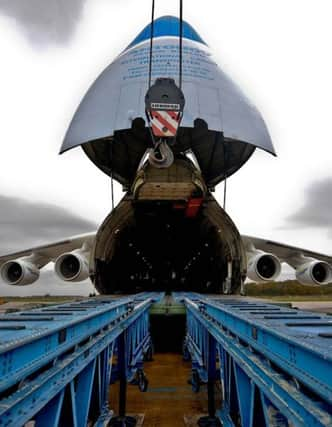The view from Steel City: The saga of one airport's road to prosperity


But no matter how many airlines or destinations it might offer, you have to get there in the first place.
And for years that was the problem with Doncaster Sheffield Airport. The majority of travellers would approach at high speed on the M18 – and then just as it was almost in sight, they’d have to turn off at Junction 3 and head in the opposite direction.
Advertisement
Hide AdAdvertisement
Hide AdThere followed a perverse and lengthy detour through the centre of Doncaster and its suburbs to get there.
The ‘Cantley Crawl’ as it was dubbed, took as long, if not longer, than the rest of the approach, if you were coming from Sheffield.
It was clear from the outset that until the access was fixed it would never fulfil its potential.
And what potential. The 101-year-old former RAF Finningley site and former Vulcan nuclear bomber base has a 1.8-mile runway, one of the longest in the North.
Advertisement
Hide AdAdvertisement
Hide AdIt also fills a gap serving millions of people in Sheffield City Region and beyond, and slots in geographically between East Midlands and Leeds-Bradford.
Peel Airports bought the site from the Ministry of Defence in 1999 and the first commercial flight was in 2005.
It ploughed £150m into the project and built a sparkling terminal building. But despite all this, even more money was needed to fix the access.
A plan to ease the tortuous trip from just about anywhere to the site – and open up thousands of acres of land – was conceived 10 years ago.
Advertisement
Hide AdAdvertisement
Hide AdIn March, it finally opened as a £56m three-mile link road from Junction 3 of the M18.
The Great Yorkshire Way slashes the journey time from Sheffield to less than half-an-hour and places 6m people within an hour’s drive.
The scheme took £12m more of Peel’s money, with a similar sum stumped up by developer Verdion and landowner Harworth. The taxpayer paid £18m.
But all agree it was worth it. The scheme has the potential to bring £1.7bn of investment and 20,000 jobs. Verdion is building a £400m inland port – a 337-acre railhead and warehousing complex – while 5,000 homes are planned.
But it is the airport which has felt the most impact.
Advertisement
Hide AdAdvertisement
Hide AdFor a long time it was an eastern European and package holiday specialist and not a lot else.
But two years ago Aer Lingus signed up, offering flights to Dublin and on to North America.
Then last year came the big one. Flybe announced 42 new flights a week to eight destinations including, crucially, to two European hubs – Paris and Amsterdam – that connected Doncaster with the world.
Finally, it had all come good. Some 75,000 Flybe seats have been sold to date. And the airport is growing at 20 per cent a year.
Advertisement
Hide AdAdvertisement
Hide AdThere are also plans for Aero Centre Yorkshire – a 1,600-acre business park aiming to replicate Airport City, the mini metropolis around Manchester Airport.
No wonder managing director Steve Gill believes it could be rivalling Leeds-Bradford in five years. The West Yorkshire site has 3.3m passengers, compared to 1.3m in Doncaster.
But it’s more complicated than that, for Leeds-Bradford is notoriously difficult to get to, especially in rush hour, because it is served by B roads.
It is also high up and frequently affected by high winds or fog. Earlier this year experts announced it was “technically impossible” to build a railway line to it, leading to calls by some for the airport to be moved. There are no such constraints at Doncaster Sheffield Airport – and given its growth it is likely many people reading this will end up using it soon.